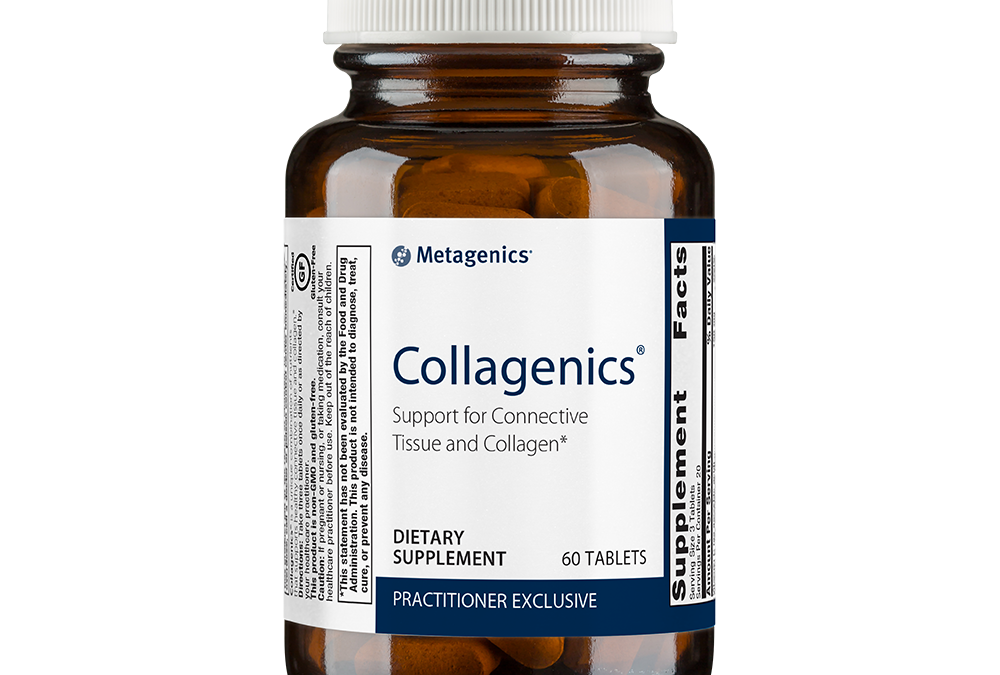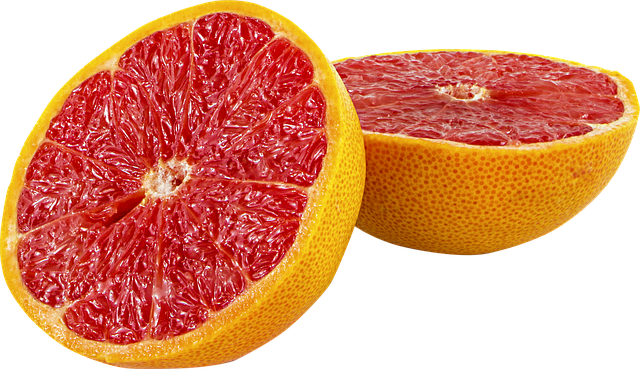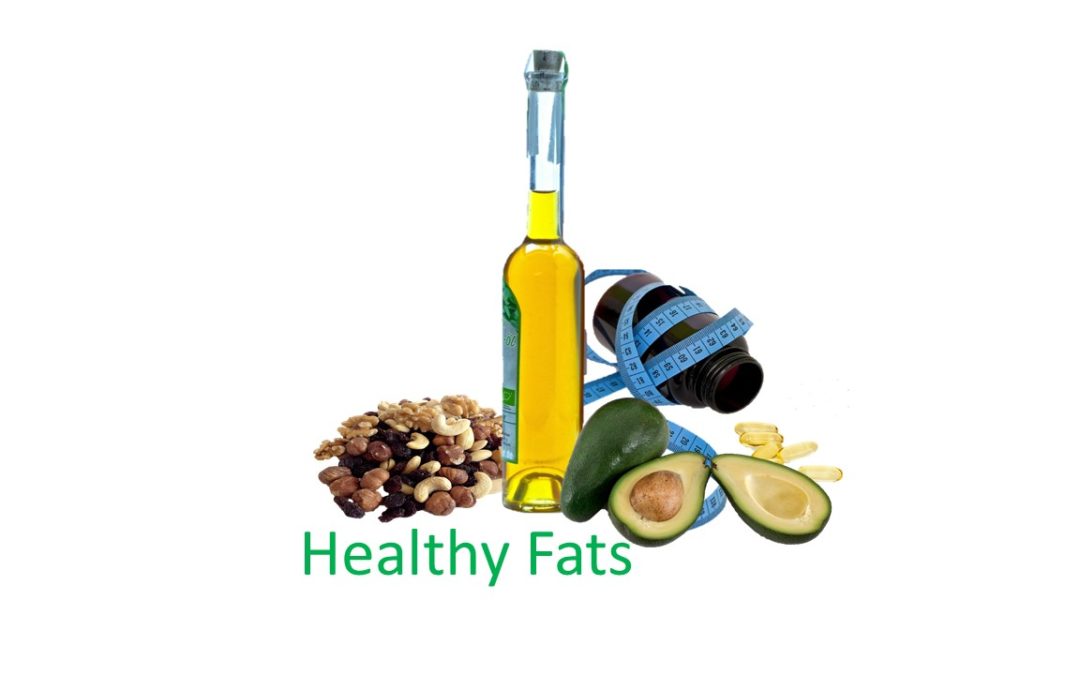
by dnshah | Mar 29, 2019 | Age Defying, Health and Wellness Tips
I’ve noticed the buzz on many people taking collagen supplements, especially in their senior years. Why all the buzz? Here’s some basic information about collage; but remember to always check with your doctor before adding new supplements. Only your doctor can advise you on quantities and alert you to cross reactions with medications and side effects to be concerned about.
Defined
Collagen, the uncooked form of gelatin, is a structural protein that forms connective tissue in the human body. Collagen is the supportive material that gives our bones, organs, skin and connective tissue shape, flexibility and strength. Collagen makes up roughly 90% of our bones and roughly 80% of our skin.
It’s not digested well in humans unless cooked for hours to break it down. General foods that contain collagen are fish, chicken skins, and other connective tissue meats.
The Buzz
We all want to sustain the integrity of our tissues, skin and digestive system. These are some of the benefits that collagen can provide (food and supplements).
Youthful Skin
Anti-aging cosmetic products are big business, but a natural food substance with anti-aging potential characteristics can be gold. There are several studies showing that collagen supplements improve skin hydration, elasticity, cellulite changes, and wrinkle reduction.
Leaner and more muscular body.
Collagen has been shown to increased muscle strength in age related muscle loss for elderly men, especially in combination with resistance training (when compared with placebo).
More durable joints.
Collage supplementation appears to promote integrity of tendons, and be a potential therapeutic agent to support joint health and manage osteoarthritis issues.
Healthy gut.
It’s important to keep the intestinal epithelial layer healthy and intact. Collagen supports the health of the digestive lining (just like our skin), and in this way promotes a healthier gut and immune system.
Selection
There are many different collagen supplements on market, so strive to find one that is high quality, but low in sugar, and with minimal ingredients. After asking your doctor about adding collagen to your diet, I recommend Metagenics collagen.
This article is not intended for the treatment or prevention of disease, nor as a substitute for medical treatment, nor as an alternative to medical advice. Use of recommendations in this and other articles is at the choice and risk of the reader.
References
http://www.pathophysiologyjournal.com/article/S0928-4680(00)00045-6/pdf

by dnshah | Mar 29, 2019 | Age Defying, Health and Wellness Tips
Typically spring brings us warmer temperatures and a transition from the dreary winter season. This transition can bring us change physically:
- Dehydrated skin / face
- Allergens in the air (pollen) can lead to skin rashes
- Increased oil production
- Increased hair production
So this calls for a transition to the spring season.
Spring is about new and fresh; so change up your skin regimen products to something soothing and calming to awakening your skin. Repairing your skin from winter harshness is important for preventing seasonal irritation. Think Aloe facial mask, Cucumber peels, and amazing hydration afterwards. Here are some tips.
Detox
Spring is about detoxing and cleansing. When we mirror that with our diet, our bodies are in sync with nature. At this time, eat more liver friendly foods so that your organs are nourishing you from the inside out. Focus on fiber, the new crops that are in season now: kale, mustard greens, dandelion greens, collards, radishes, etc. Incorporating bitter tasting foods now is a great detoxifier (cooked or raw) and beneficial to the skin also.
Masks
Cleanse and soothe irritated faces with masks that float moisture and antioxidants above the skin for maximum absorption. Create a calming ritual to welcome spring into your life, and be radiant for the natural warmth and growth the earth brings. Products to consider include masks made of Manuka honey, antioxidant berries, or probiotic yogurts. Combine desired ingredients with a few drops of warm water and apply topically. Allow it to sit for 15 minutes before rinsing off.
Air Purifier
Spring allergies can come with facial irritation, puffiness, and dry skin patches. A good air purifier can help rid the home of airborne irritants and help with these signs that spring is in the air.
Lighten the Moisturizer
Spring transition includes lightening up your moisturizer. Maintain moisture levels, but don’t suffocate skin with heavy products because our natural oil production is beginning to increase also. Cleanse skin and follow it up with a lighter moisturizer and massage it into the skin well so it absorbs.
A daytime moisturizer with an added layer of protection against the environment (sun, pollution, irritants) is ideal. A nighttime moisturizer with antioxidant is ideal. Put aside stronger acidic products with glycolic acid, and reach for calmer soothing ones.
Sunscreen
Sunscreens are a must in spring because of increased sun exposure. Ideally a ritual of daily face protection at a minimum is wise at this time. Acne sufferers can focus on products that don’t clog pores and suffocate the skin. Choose products with non-clogging oils and hypoallergenic ingredients.
Antioxidants
Repair and restore the skin with soothing botanicals and antioxidants. Look for skin protection with photo-protective properties that minimize sun-induced damage and use natural vitamin C. This protects better against UV damage. When cleansing, think about products with natural berries and oils that add layers of antioxidants and protection power. Think natural sprays, moisturizers, serums, and oils.

by dnshah | Jan 28, 2019 | Age Defying, Diet and Weight Loss, Health and Wellness Tips, Obesity, Stress Management
Red grapefruit is Texas’ state fruit, and celebrated in season each year (November – May). If you’ve never had Texas grapefruit, don’t miss out; and by the way, February is National Grapefruit Month, so toss them into your favorite citrus salad, bowl, or entrée.
Grapefruits are grown all over the world and come in a variety of colors. The US is a leading producer (along with China and Mexico), and Texas is a major commercial exporter of this fruit.
They are an excellent source of vitamins A & C, fiber, and also contain potassium, calcium, and an array of phytochemicals. This means it is an excellent food to boost immunity. And you know my philosophy: when you can boost your immune system, it can protect you from other evils! Eating this gem on a regular basis can ultimately help to lower risks of obesity, diabetes, heart disease (cholesterol & blood pressure), IBS, osteoporosis, and some cancers (namely colon, esophageal, & oral). Note that some of these studies were animal-based and not human; but I am presenting grapefruit as a super fruit based on the collection of all of these benefits seen in research.
NOTE: If you are on prescription medication, grapefruit can react with certain medications and enzymes affecting the quantity of medication absorption and efficacy. Please check with your doctor before mixing grapefruit and medications.

by dnshah | Jan 6, 2019 | Age Defying, Diet and Weight Loss, Health and Wellness Tips, Stress Management
I know… ‘tis the season to drink and be merry. A drink here and there is minimal impact to our gut; but when we indulge more than that, our guts may be getting impacted. Is this something we need to watch? Well most of us realize that when our digestion is not working as it should, our health gets impacted;1 but did you know that our digestive tract holds a majority of our immune system via billions of gut bacteria? The harmony of our gut bacteria are impacted by many unique factors, including stress, environmental vulnerabilities, and diet – which may include alcohol. Alcohol consumption impacts our microbiome and our digestion via changes in pH, saliva-bacteria interaction, and bacterial metabolism.2 Our oral microbiome changes may increase our risk for oral diseases, such as periodontal disease and dental caries. Our gut microbiome changes may increase our risk for systemic diseases, such as psoriasis, colon cancer or cardiovascular disease.2
What is defined as enough alcohol to make these risky changes within our microbiome? According to a study in Microbiome:
- Moderate consumption is defined as 0-1 glass for women/day, and 0-2 glasses for men/day
- Heavy consumption is defined as > 1 glass for women/day and > 2 glasses for men/day.
The study with over 1000 subjects showed patterns which increased alcohol consumption. With increased alcohol consumption:
- Lactobacillales (LBS) is decreased. LBS is important in maintaining the pH of a healthy oral cavity. Abnormal pH of oral cavity reduces saliva’s antimicrobial property, and that can lead to increased growth of bacteria. This was seen in the study with existence of potentially pathogenic bacteria or bacteria associated with dental caries, periodontal disease, infective endocarditis, and other infections.
- Dysbiotic bacteria takes consumed ethanol and produces acetaldehyde, which is a group I human carcinogen. Group I human carcinogen are categorized by WHO. LBS can metabolize acetaldehyde, but with decreased LBS we will find increased acetaldehyde.
So… what types of alcohol does it take to make these risky changes within our microbiome? You may have heard that wine may have antimicrobial properties; this study also supported that fact.
- Wine drinkers had a higher microbial diversity than that of non-drinkers.
- Drinkers of wine vs. beer vs. liquor had distinct oral microbial communities.2
- Dysbiosis in the oral cavity may play a role in alcohol-related carcinogenesis through increased levels of acetaldehyde.
- More research is needed to better understand the impact of each type of alcohol on the oral cavity microbiome.
This study is important to better understand the role of alcohol in our risks for chronic disease. Moderate and heavy alcohol consumption may impact our oral microbiome, which impacts our health and risk of other diseases (oral and systemic).
References
- Carding S, Verbeke K, Vipond D, Corfe BM, Owen LJ. Dysbiosis of the gut microbiota in disease. Microb Ecol Health Dis.2015;26:26191.
- Fan X, Peters BA, Jacobs EJ, et al. Drinking alcohol is associated with variation in the human oral microbiome in a large study of American adults. Microbiome. 2018;6(1):59.

by dnshah | Jan 1, 2019 | Age Defying, Health and Wellness Tips, Obesity, Stress Management
According to research, using an infrared sauna 4-6 times per week is associated with an improved immune system, with benefits to the heart, brain, and joints. An infrared sauna is a hot room that uses an infrared light to heat. Similar benefits can be achieved through a steam room, where the idea is to get your sweat on!
Some of the benefits I’ve observed include:
• Skin clearing. The steam helps clear skin impurities
• Opening of sinuses. Opens up and thins mucus membranes in the body, which can enable free breathing.
• Circulation boosting. The heat promotes circulation which also makes your skin glow.
• Tension/ stress Relief. The heat relaxes the muscles, and soothes the mind with endorphin release. The end result mimics a post-workout relaxation which is a sense of readiness to tackle the world!
• Pain relief. The study discussed the benefits to relieving pain from joints – which is so good for those with arthritis, but also it helps people with headaches.
• Detox boost. Detoxification is defined as eliminating toxins stored in the body. Everyone is unique in the varying methods that work best (a short –term liquid diet, anti-inflammatory elimination diet, or even… regular steaming). Our bodies are always detoxifying on their own to each of our maximum capabilities, but we all have a different amount of toxin exposure from the air (think smoke and pollutants), water (think contaminants and microbes), and food (think GMO changes and pesticides). And we all have differing detox capabilities. Some of us can detox much faster, and others need more time. The truth is detoxifying is such a bio-individual process, and over time our changing world brings more toxin challenges (think changes from agriculture, beef, and dairy industries). While we hope our bodies can handle it all without additional measures, it would be foolish to think that our bodies will never be overwhelmed. Some of us could use a little additional support. So using a Jacuzzi, steam room, or sauna could help us boost our body’s ability to detoxify.
• Flexibility improvement. Heat penetration makes muscles more fluid and loose.
Remember to consult with your doctor before starting ANY new exercise or sauna habit. You’re your doctor’s approval, start out slowly – just a few minutes at a time; and then gradually increase. Saunas are found in spas and many gyms throughout the country. Enjoy getting your sweat on!
The evidence on regular use (4-7 times/week for 5-20 minutes) in hot saunas ((175-210°F) suggested some reduction in the overall risk to vascular diseases (think high blood pressure, cardiovascular disease, and neurocognitive diseases); non-vascular diseases (think pulmonary diseases); mortality; and other miscellaneous conditions (think arthritis, headaches, or flu). So lately I find myself telling my clients to make time to sweat – even if they don’t have time for regular gym activity.

by dnshah | Aug 9, 2018 | Age Defying, Diet and Weight Loss, Health and Wellness Tips, Stress Management
The Scoop on Omega-3, -6, and -9
More conversations are occurring on the importance of “healthy fats”… what which fats are those? Omega-3, Omega-6, and Omega-9 are important fatty acids to balance for optimal impact to overall health. Let’s talk benefits and examples of each:
Alpha linolenic acid (ALA) is an essential omega-3 fat, linoleic acid (LA) is an essential omega-6 fat, and oleic and mead acids are omega-9 fats. “Essential” fats are those that cannot be produced in the human body, so they must be obtained through diet or supplements.1 So much importance has been placed on omega-3 and -6 fats because they are essential. However omega-9 production requires conversion enzymes that only synthesize when omega-3 and -6 intake is low.
So the balance of these fats is critical to realize the benefits of healthy fats. These benefits include:
- optimal daily functioning of bodily tissues.2
- anti-inflammatory (when omega-3 is higher than omega-6)
- visual and neurological development
- cardiovascular support
Omega-3 fatty acids are found in marine and plant sources: flaxseeds, chia, walnuts, and oily fish like salmon, herring, tuna, and sardines. 3 The dietary Reference Intake (DRI) for ALA is 1.1-1.6 g/day for adults. 1 The American Heart Association encourages two servings of seafood per week, which nets the weekly DRI for omega-3 consumption.
Omega-6 fatty acids are found in oils and nuts: safflower-, sunflower-, sesame-, soya-, and corn oils, and Brazil- and pine nuts.3 The DRI for LA is 11-17 g/day for adults.1 However because the standard American diet is typically high in omega-6 fatty acids, it is not a challenge to meet this. Recent theory stipulates lowering that DRI could be beneficial in overall balance of ALA and LA which can lead to better anti-inflammatory conditions systemically.
Omega-9 fatty acids are a family of monounsaturated fats found in vegetables and animal fats: avocados, cashews, almonds, olives, and pecans.4-5
It’s not easy to get the right amount of each unsaturated fatty acid, so call on the advice of your healthcare practitioner to realize the many health benefits that each fat provides.
References:
- Dietary References Intakes for Energy, Carbohydrate. Fiber, Fat, Fatty Acids, Cholesterol, Protein, and Amino Acids (2002/2005).
- Essential Fatty Acids. Available at: http://www.pcrm.org/health/health-topics/essential-fatty-acids. Accessed July 5, 2018.
- Oregon State University. The Linus Pauling Institute: Micronutrient Information Center. Essential Fatty Acids. http://lpi.oregonstate.edu/mic/other-nutrients/essential-fatty-acids. Accessed July 5, 2018.
- Cooli J. Omega-9 Benefits: Are You Getting Enough? https://universityhealthnews.com/daily/nutrition/omega-9-benefits-are-you-getting-enough. Accessed July 10, 2018.
- Finucane O et al. Monounsaturated fatty acid–enriched high-fat diets impede adipose NLRP3 inflammasome–mediated IL-1β secretion and insulin resistance despite obesity. 2015;64(6):2116-2128.








